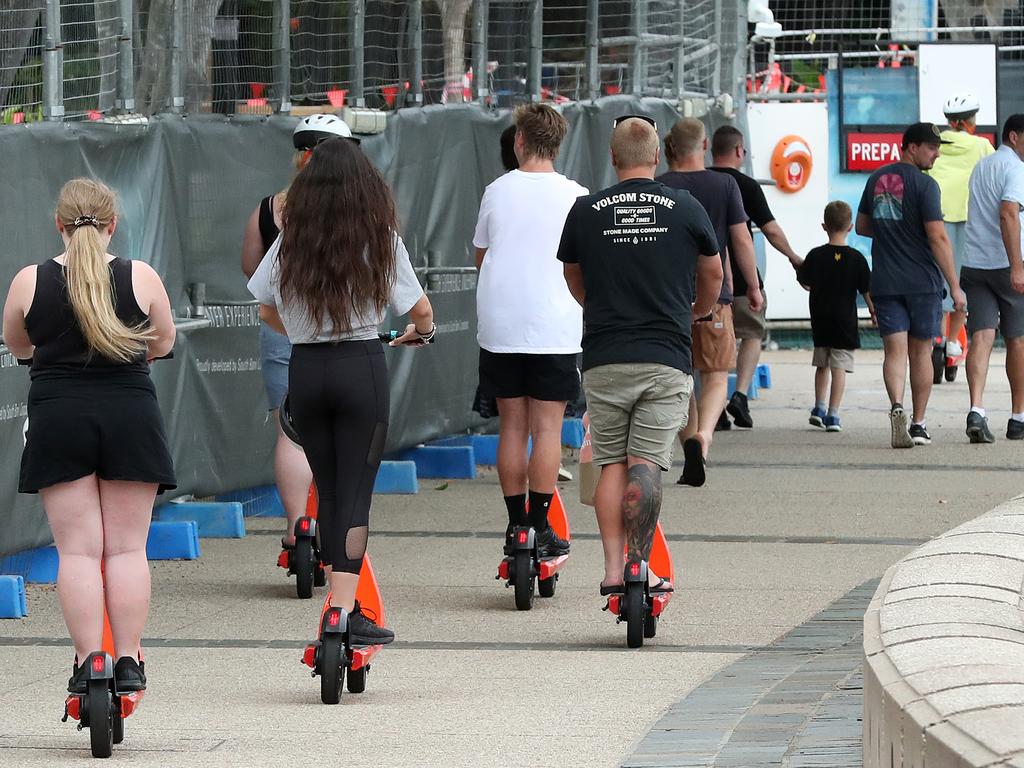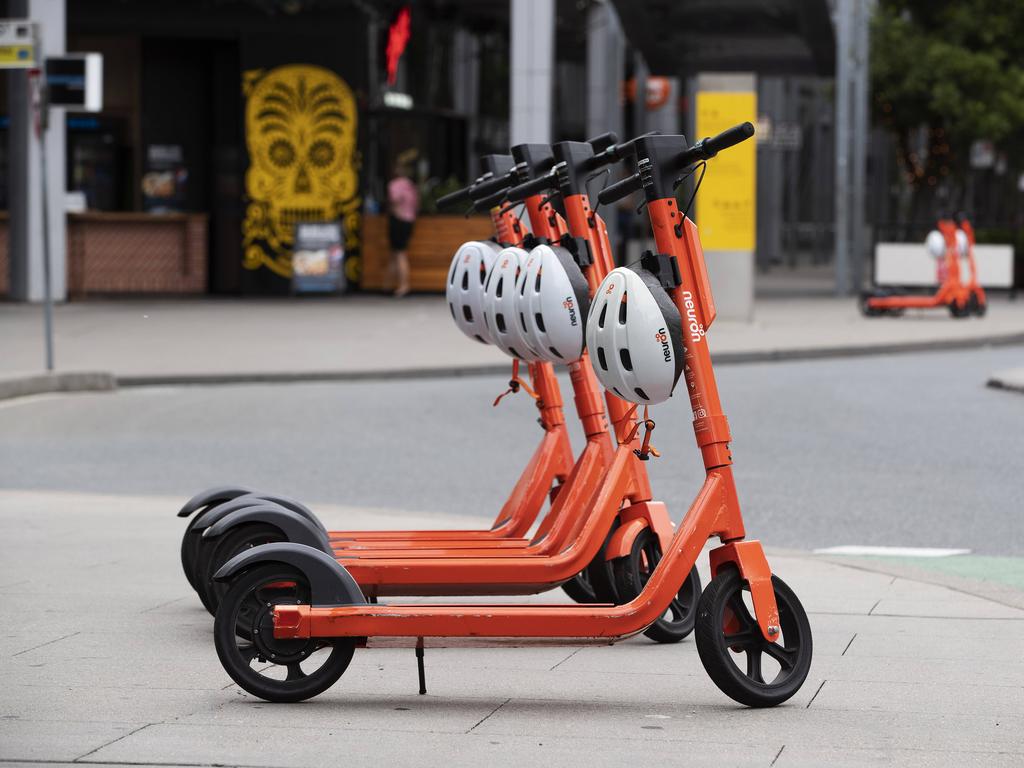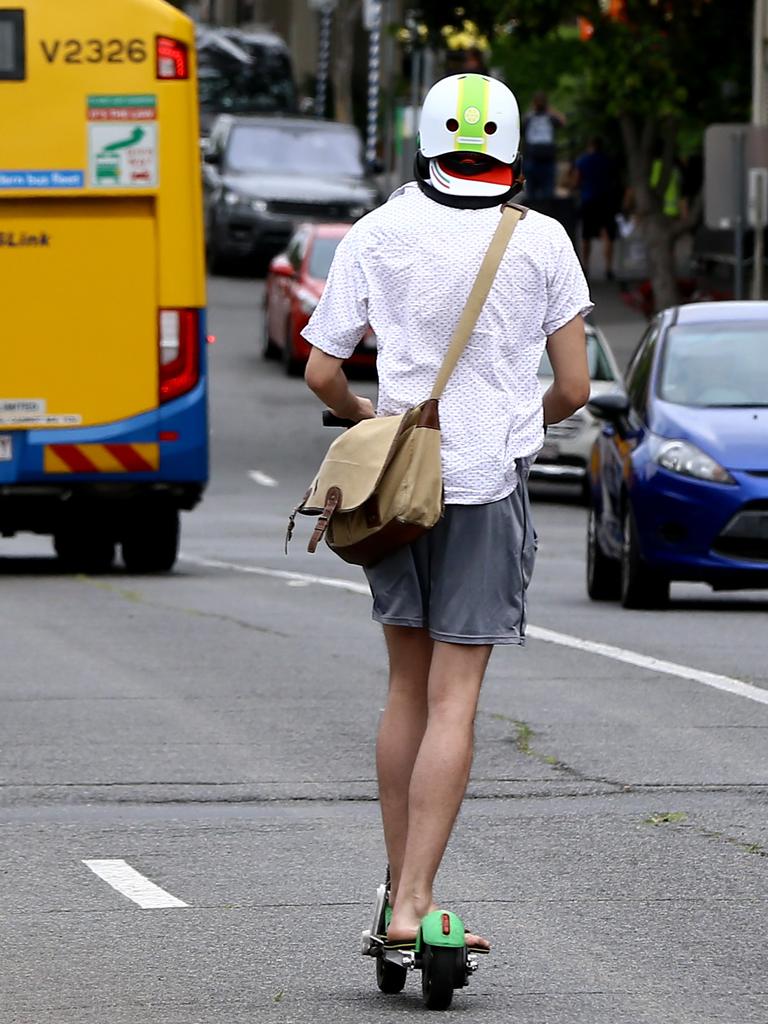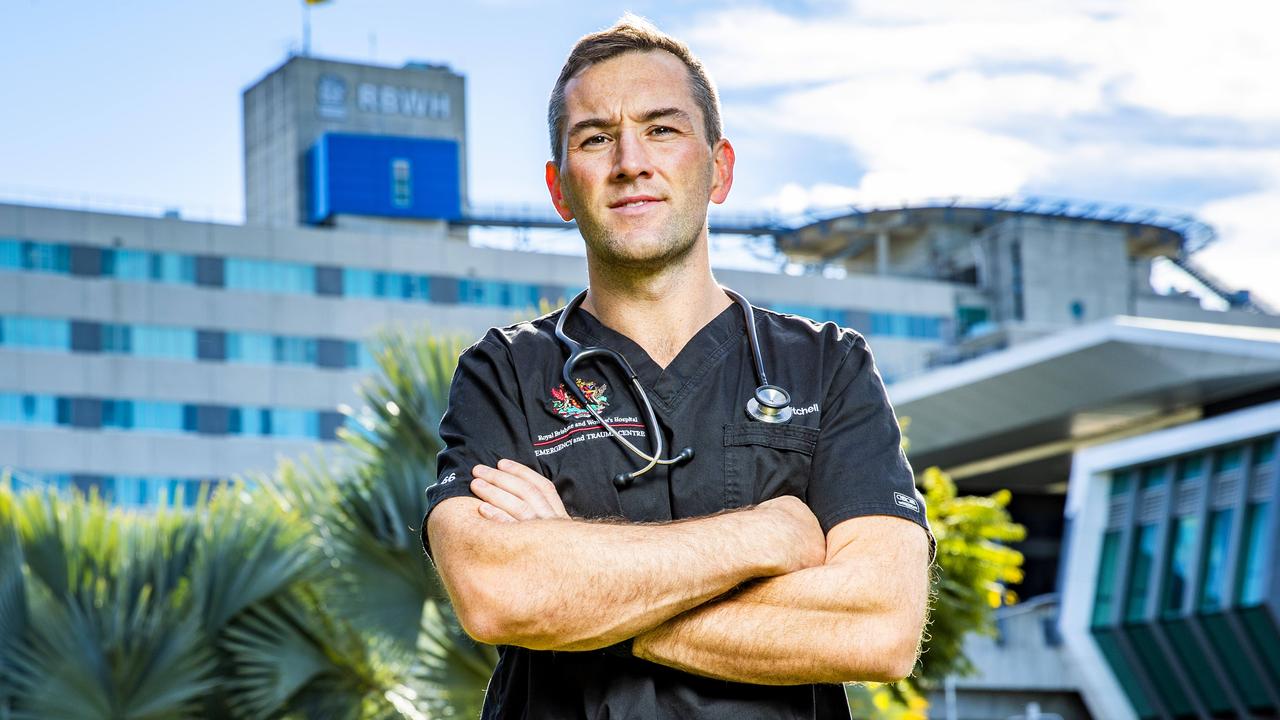Record month for e-scooter injuries as reports reveal Queensland’s high crash zones
An analysis of incident data has revealed the Queensland locations with the highest crash rates for e-scooter riders.
Head, face and leg injuries have landed Queensland e-scooter riders at the emergency department at a rising rate this year with November topping the ladder for overnight ambulance calls before the month’s end.
An analysis of overnight e-scooter incidents reported by Queensland Ambulance Service each day this year has revealed Fortitude Valley and Brisbane City have the highest crash rate where riders need medical attention.
Paramedics have been called to at least one crash a week in 2021 and this month has been the worst yet with 12 overnight incidents reported, including seven in the past week.
Emergency Department specialist at the Royal Brisbane and Women’s Hospital Dr Gary Mitchell said the number of injured e-scooter riders presenting at emergency departments was actually much higher with almost three to four at his hospital alone each day.
The Jamieson Trauma Institute researcher who instigated a review of the incidence and nature of injuries across Brisbane said there had been a gradual increase across the Royal Brisbane, Mater and Princess Alexandra hospitals.
Dr Mitchell believes the higher number of overnight crashes at Fortitude Valley and in the city could be linked to alcohol consumption.

“In one of the publications we released, a quarter of the patients presented had alcohol on board and over half of them weren’t wearing helmets,” he said.
“The spikes in presentations are on the weekends and in the evenings from 6pm to midnight.”
Dr Mitchell said e-scooters were burdening the hospital systems and he believed related presentations would only continue to rise.
Of the overnight incidents reported by Queensland ambulance, a third involved head or face injuries.
Almost 70 per cent of patients assessed were men.
Neuron – which has e-scooters across Brisbane, Bundaberg and Townsville – has introduced safety technology in a bid to reduce risks.
These include a helmet lock, triple-0 emergency button, topple detection, in-app safety school and “follow my ride” functions.

“Across all of our markets in Australia, including those in Queensland, there are less than two incidents per 100,000 km travelled that require inpatient treatment of the rider and we have almost no cases of injured pedestrians,” a Neuron spokeswoman said.
“Despite these low figures, we are always looking for ways to reduce the risks further.”
Neuron this month announced a trial of new technology including a dangerous riding detection system which works with a range of new smart sensors to correct and control riding behaviour.
“We’re seeing the public hire schemes getting a grip on their safety with speed limiters but it’s the private ones now that are certainly getting more concerning,” Dr Mitchell said.
“With a two-minute YouTube hack, they can change the speed limiters on them and some of them are going up to 60km/h hour and causing significant injuries.”
E-scooter crashes have even resulted in Queensland deaths with the most recent on a West End bikeway in July this year.

The rider, aged in his 50s, was using his personal scooter along Riverside Drive, near the Go Between Bridge in West End, when he crashed into a pole.
Concerned pedestrians rushed to render first aid and paramedics worked tirelessly on the man for more than 20 minutes but he died at the scene.
Beam, which has the other half of Brisbane’s public e-scooter fleet, claims less than one trip out of every 100,000 results in hospitalisation.
Beam spokeswoman Michelle Leong said the provider was concerned with the wider community understanding safety regulation.
“With the rise of micromobility in Queensland, we are actively advocating for additional infrastructure to accommodate active transport – such as increasing the number of protected bikeways,” Ms Leong said.
“ We believe that this is the safest and best way for e-scooter riders to get around the city, as vulnerable road users.
“In addition, as shared e-scooter operators have the additional technology that differentiates us from personally-owned e-scooters, we are committed to working with state and local government authorities to make safe shared e-scooter trips more accessible to all.”






